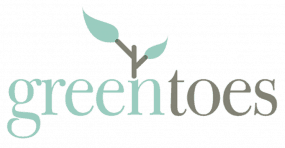Running is good for you, both physically and mentally. The only downside is that running can be taxing on the body. Since running activates many muscle groups, and training frequently without adequate recovery can wear them out, massage therapy is a valuable tool for serious runners. Massage therapy can help runners prevent injury, repair injury, and even improve their running performance. It’s time to stop thinking about massage as a luxury and start thinking about massage as a tool for your athletic growth.
Massage For Preventing Sports Injuries
Overused or tense muscles can make runners more prone to injury. Muscles perform best when they’re well stretched, frequently rested, and regularly maintained. This maintenance partially comes from a well balanced diet. Obviously, eating healthy, getting adequate protein, and drinking plenty of water will help the body to function at peak levels. Stretching before a run helps to prepare the body for the impact of your feet hitting the ground repetitively. Recovering between intense runs is also important, as building stronger muscles naturally involves damage to the tissue. The other part of muscle maintenance and injury prevention comes from massage therapy.
Massage stimulates the muscles, resolving tension and helping them to relax. Regular massage will make stretching, hydration, recovery time, and a proper diet more effective. Massage directly addresses the health of deep tissue, something that normal stretching ordinarily cannot do. Massage can also speed up muscle recovery times, allowing runners to resume training sooner.
Massage For Treating Sports Injuries
Sports injuries can debilitate runners, causing huge setbacks with athletic goals and a fair amount of pain. Pain relievers can help dull the uncomfortable sensation caused by the injury, but will not cause the injury to heal. Some injuries heal with time, and until they do, running enthusiasts are left sitting on their couches while their running shoes start to collect dust.
Muscular Injuries
Massage for muscular injuries usually involves a few sessions. The muscle will need time to naturally recover between sessions, making treatment necessary only once or twice a week. A massage therapist will be able to determine the right course of action depending on the nature of the injury.
Massage stimulates the muscle, breaking down scar tissue and sending in an influx of oxygen rich blood. This blood supplies vital nutrients the muscles, speeding up healing time. Massage also removes metabolic byproducts that often accumulate in injured muscles, causing stiffness and swelling. Pushing out the old stuff and letting the new stuff in promotes muscle health, leaving runners with stronger, more conditioned muscles that are ready to take on their next marathon.
Ligament And Tendon Injuries
Injuries to ligaments and tendons are very common in runners. Achilles tendinopathy in particular frequently develops in athletes. Tendon and ligament injuries are resolved through massage therapy in a similar fashion. Tendons and ligaments are targeted with deep strokes and friction techniques. Some runners find that they need several treatments a week, with a day or two in between for the affected tendon or ligament to respond. Using ice or cold compresses in between treatments can minimize the pain and swelling associated with the injury.
Runner’s Knee
Runner’s knee is a very straightforward name for a very straightforward injury. The most common symptom of runner’s knee is pain or discomfort behind or surrounding the kneecap. It usually occurs because the four quad muscles are somehow imbalanced – they may not have evenly developed in strength. Runners should target their quads with weightlifting exercises to optimize performance and reduce the potential for runner’s knee.
Massage treatment for runner’s knee involves lengthening, stretching, and massaging the overworked quad muscles. In addition to treating the quad muscles, the massage therapist will also usually lengthen and loosen the tendons surrounding the knee cap to reduce soreness and restore mobility.
IT Band Pain
Iliotibial band pain is similar to runner’s knee, but it affects a different set of muscles. The gluteal muscles are often the source of IT band pain, and they require a special kind of deep massage in order to become relaxed. After your massage therapists works your gluteal muscles, it may be a good idea to start a strength training regimen where the glutes are targeted and built. Doing so can prevent future IT band injuries.
Foot Pain
Runners clearly put a lot of strain on their feet. Improperly fitted running shoes can contribute to significant plantar fascia pain, leaving a soreness or a strained feeling in the arch of the foot. Make sure your running footwear is sized appropriately, and speak with a podiatrist about custom insoles in the event that they may be necessary. If you are experiencing plantar fascia pain, your massage therapist can lengthen and stretch the tendons causing tightness in the soles of your feet.
Greentoes Can Show You
Our experienced licensed massage therapists are well versed in sports massage for runners. We invite you to book an appointment with us before you lace up your running shoes. Whether you’re looking to prevent running injuries or to recover from one, our massage therapists can provide you with the relieving, relaxing experience you deserve.

